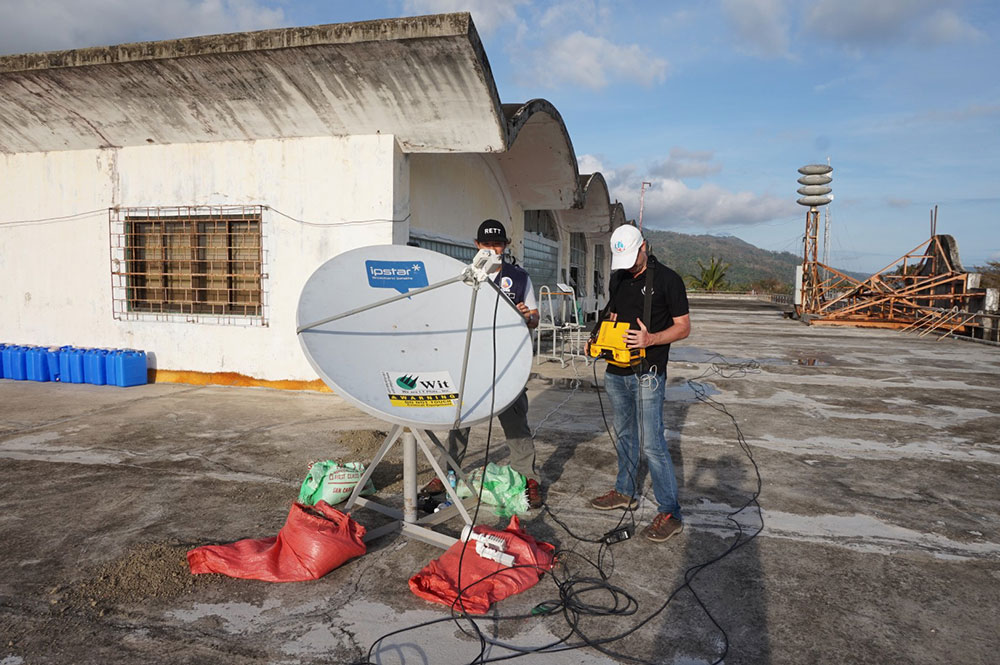Typhoon Kammuri
Context: Typhoon
Start date: 01/12/2019
End date: 16/12/2019
Areas of intervention:
- Catanduanes Island (Bicol region, Luzon)
- Batag Island
- Northern Samar
Activities:
- Support to Humanitarian Coordination
- Humanitarian Calling Operations
20th typhoon to enter the Philippines in 2019
1 922 106 people affected (Source : NDRRMC)
98% of first call since disaster
95% of successful calls
Context
Tropical Cyclone Kammuri (Tisoy in the Philippines) was identified as typhoon on November 28. On November 30, the local governments of the Philippines started preparing in anticipation of its arrival: over 200,000 people were evacuated due to fears of flooding and landslides. On December 3, Kammuri made landfall in the Bicol Region at peak intensity as a category 4-equivalent typhoon. Flights and operations at Manila International Airport were suspended for twelve hours between December 3 and 4 with more than 520 flights cancelled. The typhoon downgraded to a tropical depression on December 5 and was out of the Philippines area that same day.
According to the National Disaster Risk Reduction and Management Council (NDRRMC), a total of
1 922 106 people were affected and 50 128 were evacuated. The death toll was of four people and there were 318 injured.
Deployment
In view of the typhoon approaching the Philippines, TSF deployed a team with satellite equipment from its Asian base as early as December 1. Upon its arrival, in Manila, on December 2, the pre-positioned team reached out to our local partners on the ground to assess their needs.
In the meantime, with the help of our staff at the international headquarters, the evolution of the typhoon and its possible impact was closely monitored to evaluate the possible damages and TSF’s intervention area.
The Department of Information and Communications Technology of the Philippines (DICT) needed TSF to support the local emergency response mechanism by setting up a connection at the governor’s bureau in one of the most affected areas: Catanduanes Island.
Support to local government
Our IT technicians arrived on Catanduanes Island as early as December 4, and helped the DICT to set up the first connection since the passage of the Typhoon that same day, providing an Internet connection to the local authorities' response teams to strength their efficiency and reactivity in assisting affected communities.
New needs were then assessed in Nothern Samar to support local government and in December 6 and 7, TSF arrived in Catarman and Laoang respectively in order to set up connections allowing local government to coordinate and manage their relief operations.
Humanitarian calling operations
After having our IT technicians assessing the needs for population assistance, they travelled to Laoang and Batag Island in order to set up three Humanitarian Calling Operations (HCO) in remote locations without any communication or unstable connections. For 98% of the beneficiaries, it was their first call since the disaster.

















